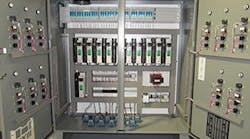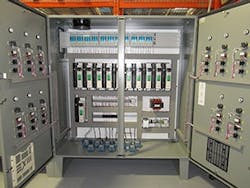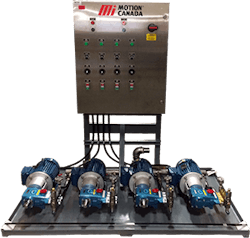2 strategies to help drive down the cost of motors ownership
Efficiency is a term that people use with respect to a host of aspects in their life. We see athletes trying to be more efficient in their workouts, automobiles becoming more efficient with fuel mileage, air conditioners becoming more efficient with power, and manufacturers trying to be more efficient during production. In technical terms, it truly means: “The ratio of the useful work performed by a machine or in a process to the total energy expended or heat taken in.”
So why is it that the efficiency of an electric motor doesn’t seem to matter in the plant’s maintenance department, but it causes grief for the plant manager who is trying to reduce operating cost?
Maintenance departments typically have one major job: Keep the plant running. Over the past 10 years, we have continued to see a change in the way manufacturing plants operate – tool cribs are getting smaller, and there are fewer maintenance personnel to keep the plant running. Plants try to reduce their operating expenses by not stocking replacement items, and they are reducing their annual maintenance department budgets. This means that the maintenance department is getting the cheapest motor possible, and the plant energy bills continue to climb.
What can be done to change this negative trend? Money, of course! Considering that no one wants to spend more, new technology is the only way to improve energy consumption. Maintenance departments are typically not experts in energy efficiency, and, more times than not, do not let it weigh in on their decisions. If energy improvements are not in the maintenance department’s incentives for the year, they really should be.
I am going to give you a couple of strategies that, if implemented into your plant, will net you real cost savings and help improve your efficiency.
Figure 1. This motor control center is part of a complete package, saving costs to run all of the pumps/motors at a reclamati
1. Every time a motor is replaced in the plant, make sure it has a variable frequency drive (VFD) or soft start control on it. Why, you ask? Well let’s start with what is happening without these units. When a motor does not have a VFD or soft start, it is what we refer to as “starting across the line” – meaning 100% of the power is rushing into that motor at a single flip of a switch. It’s like every time you stop at a stoplight in your car and the light turns green, you floor it up to its operating speed. Like the car engine, the electric motor torques and rushes up to speed. The car engine uses excess fuel to get up to that speed, as does the electric motor.
When you start an electric motor across the line, it uses excess power on the start, which is when the power company starts charging you for demand. This means that when you turn on that 300 hp electric motor that starts across the line, it demands energy, and the power company is going to charge you a demand change.
For example, if your utility charges $10 per kilowatt (kW) per month, and your peak-demand interval power requirement is 100 kW within a month, you’ll pay $1,000 in demand charges that month ($10 × 100 kW). Remember, this is in addition to your standard monthly energy fees.
When you start an electric motor across the line it stresses the insulation. Now, start that electric motor multiple times throughout a day over a 365-day year, and it will flex the insulation to a point of failure, creating voids breaking down the insulation, which ultimately will lead to failure.
In contrast, adding a VFD or soft start to a motor can offer higher operational efficiency and longer motor life. When a motor is running on a VFD or soft start, the controller will manage the inrush of power to the electric motor. VFDs control the hertz, whereas soft starters control the voltage. They both allow the motors to start slowly and ramp up to speed. This method reduces the inrush currents on the motor and avoids the demand power needed when starting across the line.
Figure 2. This water spray system uses piston pumps (controlled by VFDs) to meter water into wood-processing blenders.
2. Don’t purchase an application on price alone. Electric motors get a bad name in many plants because of their up-front cost. Let’s go back to the 300 hp motor we discussed earlier. In this example, I chose two electric motors. Both are 300 hp at 1,800 rpm and 460 V; the only difference is that one is 92% efficient and the other is 96.2% efficient. According to an application engineer at GE Industrial motors, the calculation HP × .746 kW/hp × energy cost $/kWh × hours × load % × ([100/eff #1] - [100/eff #2]) will provide us the difference in the energy cost annually of the two motors.
If we input our 300 hp motors into this equation and assume both motors run 365 days a year 24/7 and that one motor runs at an energy efficiency of 96.2% and the other at 92%, the annual savings work out to be $9,303.59. So when we look at the upfront cost of this 300 hp motor at roughly $12,500 for the 96.2% efficiency and $11,200 for the 92% efficiency motor, we see that the upfront cost of this motor is just a minor expense to the overall expense of a new motor.
With 10-plus years as the average life of an electric motor, the annual cost of the 96.2%-efficiency motor, not including the motor itself is $203,792.90. When you compare the energy cost with the new motor cost, you see that the motor is only 6.1% of the cost to operate that motor over 10 years. This also means that if you paid the extra $1,300 for the more-efficient motor, your company would reap more than $93,000 in energy savings over the 10-year life.
These two ideas may seem small in the grand scheme of things, but when implemented correctly, they will save your plant money.
Jimmy Walker has grown up in the electric motor industry. Now in the role of electrical product manager for EIS Inc., which is part of the Electrical Specialties Group for Motion Industries, he has inside knowledge of the electric motor industry from motor repair to distribution and manufacturing. Walker has 18 years of experience in the industry, with 11 of those years with EIS Inc.
You may be asking yourself, “How do I get this implemented in my plant?” Start by engaging a qualified electric motor specialist and ask that person to do an efficiency evaluation. An electric motor specialist can do a motor audit and evaluate the efficiency of the motors in your plant as well as the options available to make those motors high-efficiency. Remember, this is not something you have to do in one fell swoop of a pen! Just work with them to make sure that when you replace a motor that has failed, it is replaced with a more-efficient motor and a VFD or soft start is added when needed.
With today’s technology, VFDs even have features that will send you a message to let you know when a motor has shut down and potentially why it has shut down. Can you imagine your maintenance personnel being able to respond to a failure immediately instead of waiting for someone to alert them to it? As I said in the beginning, the technical term for efficiency is: “The ratio of the useful work performed by a machine or a process to the total energy expended or heat taken in.” The question is, are you expending too much energy?


